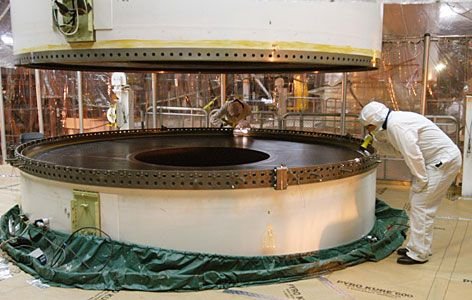Richard Feynman and the Challenger disaster

“Reality must take precedence over public relations, for nature cannot be fooled”
Richard Feynman
The Challenger disaster was a devastating blow and prompted President Ronald Reagan to convene fourteen extraordinary specialists to investigate the cause of the accident. The result was the Rogers Commission, named for its chairman William P. Rogers, and included Neil Armstrong, Sally Ride, physics Nobel laurate Richard Feynman, and mechanical engineer, Roger M. Boisjoly of Moron Thiokol, who had warned NASA of the uncertainty of the O-ring and its possible failure, which unfortunately came to fruition.
Feynman helped to root out the technical failure that led to the explosion, which turned out to be the O-rings fitted to the field joint of the shuttle’s right solid rocket booster. The O-rings were designed to be flexible so that when Challenger was launched, they would create a seal at this vulnerable rocket joint, thus preventing the hot ignition gases from sparking the fuel tanks.
But because the previous night at Cape Canaveral had been unusually cold, the O-rings had frozen in place, losing much of their elasticity. Feynman chastised NASA management on television for its lack of foresight, by performing a simple experiment that revealed O-rings to be very susceptible to prolonged brittleness in cold temperatures (see him in action in this short video below).
“I took this stuff that I got out of your seal and I put it in ice water, and I discovered that when you put some pressure on it for a while and then undo it, it does not stretch back,” he said. “It stays the same dimension. In other words, for a few seconds at least and more seconds than that, there is no resilience in this particular material when it is at a temperature of 32 degrees.”
Richard Feynman
You can read Roger M Boisjoly’s take on Richard and his role during the investigation.
“I felt it was my professional responsibility to expose the truth to the Presidential Commission on which Dr. Feynman was, in my opinion, the most personally and professionally objective member and I might add the ONLY fearless member concerning potential career damage.
As a result, he was told not to talk to engineers like me but that did not deter him from finding out the truth. After my closed door and public testimony to the Commission at which he always addressed me as Dr. Boisjoly, I received many personal calls from Dr. Feynman as he was seeking answers to questions…”
Roger M Boisjoly

Leave a Reply
You must be logged in to post a comment.